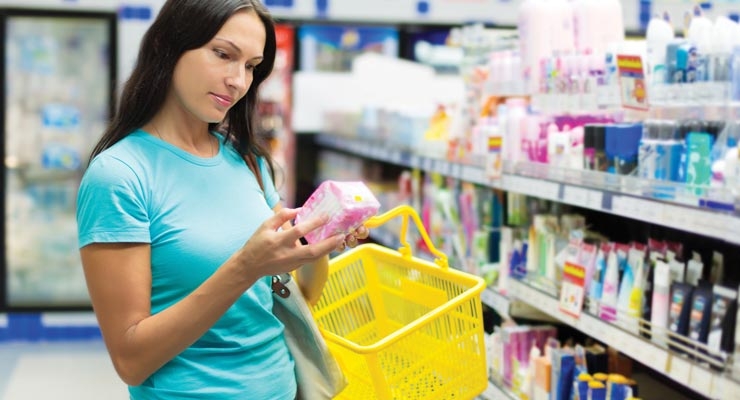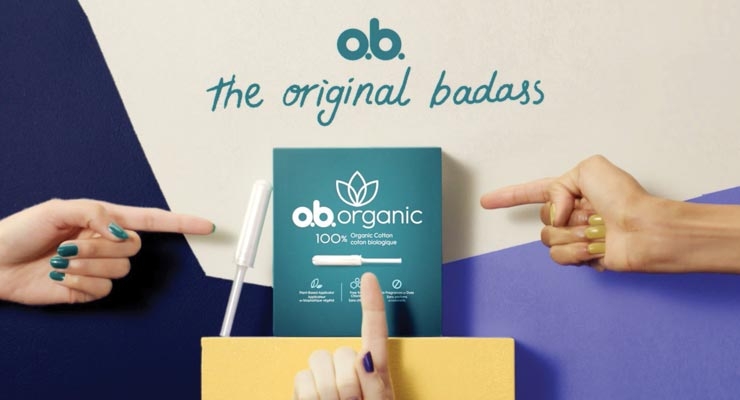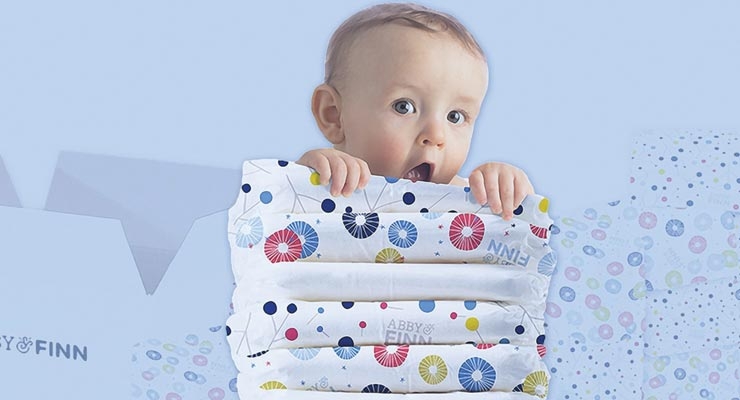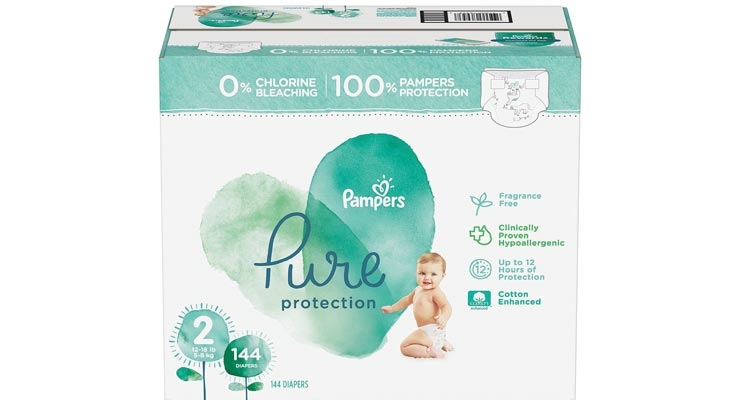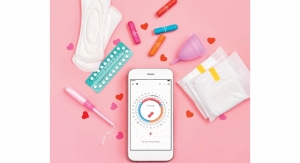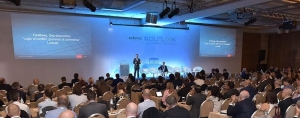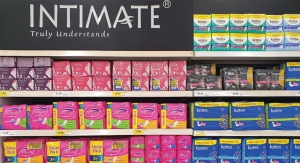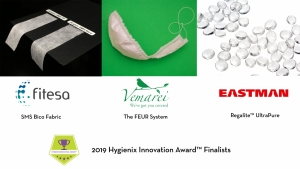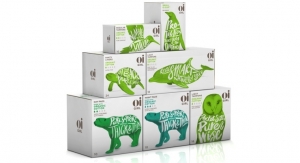Karen McIntyre, Editor12.10.19
Ingredient Labeling
In October, New York became the first U.S. state to require that all ingredients in tampons, pads and other feminine hygiene items be disclosed. Governor Andrew Cuomo signed a law giving manufacturers 18 months to develop new packaging that discloses all of the ingredients within their products.
The bill was sponsored by assembly member Linda Rosenthal. The original bill required disclosure of the percentages of ingredients, including any chemicals or byproducts of chemicals in feminine hygiene products. Industry insiders feel the approved bill, while well intending, is too broad in scope and lacks specificity and rulemaking.
“We support the goal of ensuring consumers have access to safety and ingredient information about menstrual hygiene products. The integrity of our members' products to support the health and lifestyles of women is our highest priority. While we applaud the efforts of the New York Legislature, we believe additional changes are needed to this law to create a practical and effective program,” says Jane Wishneff, executive director of Center for Baby and Absorbent Hygiene (BAHP). “BAHP remains concerned that this new requirement will result in confusion for consumers and disrupt the availability of these products in the State of New York.”
Wishneff spoke on ingredient labeling trends at the Hygienix 2019 conference in Houston, TX, in November, noting that her organization is monitoring other hygiene labeling legislation including a New York one that will require ingredient labeling on diaper packaging.
BAHP represents the personal absorbent hygiene products industry in North America by promoting and supporting the safety, sustainability and integrity of these products. Its membership represents more than 80% of the industry in North America and provides more than 10,000 manufacturing jobs.
“Industry is already providing information about product ingredients through online platforms in a user-friendly format,” Wishneff adds. “This provides manufacturers with the ability to provide accurate and timely information about product changes. This new mandate does not take in consideration constant product innovation and would limit consumer access to up-to-date information.”
The FDA already regulates labeling requirements for menstrual hygiene products including important use and safety instructions, and warnings on the label for consumers.
Product Safety
Meanwhile in Europe, EDANA has announced its intention to create a Stewardship Programme for Absorbent Hygiene Products to limit the presence of chemical impurities found in diapers, incontinence care and female sanitary items, such as tampons and sanitary towels. Industry will devise the program in consultation with regulators, academia, consumer groups and suppliers.
EDANA will commit to a new level of transparency with consumers and define limit values for impurities and ensure these cannot be found above those values, using consumer relevant test methods that will be reviewed and supported by independent experts. The program will create an industry-wide list of chemicals, including substances such as PAHs, PCBs, dioxins, furans, phthalates and formaldehyde. EDANA, further to intensive research and dialogue across the industry in the past two years, has decided to voluntarily go beyond current EU and national legislation in the field to limit the presence of impurities.
The program will be finalized in consultation with stakeholders from the scientific community, European regulators and consumer groups. Any company will have the opportunity to voluntarily participate in the program, implementation of which will start from mid-2020 and include consumer facing information and a reporting mechanism.
“Absorbent hygiene products help millions of Europeans live active, healthy and happy lives, from early childhood to old age and have a long history of extensive safe use. Consumers should know that they are safe and we want to provide transparency and reassurance with our commitment. This program will further build on the longstanding record of responsible safeguarding of these products. Our commitment is grounded in consumer needs and science, and at the same time goes beyond existing legislation,” says Pierre Wiertz, general manager of EDANA.
The new Stewardship Programme aligns with the European Commission’s advocacy of product safety codes of good practice in the General Product Safety Directive and will deliver on the EDANA Sustainability Vision for the nonwovens industry.
Natural Feminine Hygiene
Amidst these efforts, it is of little surprise that feminine hygiene companies are broadening their offerings to include more natural based products. These efforts are not only responding to legislative trends but to consumer demands, not only for transparency, but more natural and organic products.
Cora co-founder Molly Hayward entered the feminine hygiene market after traveling extensively around the world. As she developed Cora, as a brand and a company that addresses both the need for natural products in developed markets and products in general in developing regions, Hayward opted for ethically sourced ingredients like organic cotton.
“This category is shifting to natural and organic faster than anyone anticipated,” says Hayward. “We are glad that some of the incumbents are wising up and offering a version of their products that are supposedly better.”
In September, Cora expanded its lineup, which started in the menstrual care category to include light incontinence products.
The pad’s topsheet is made from 100% organic cotton that has been minimally processed. “From our perspective, education is one of the key factors in the shift that is happening in the market to naturals and women more and more are seeking out content that helps them understand their bodies better,” says Hayward, whose online blog Blood + Milk highlights women health issues like incontinence and menstruation. “For us it was logical to help expose them to this content and be the thought leader and the innovation in the thought space as well as the product area.”
Like Cora, similar natural-based feminine hygiene products are changing the look of hygiene aisles.
Organic Initiative, a New Zealand-based maker of certified organic hygiene products since 2015, entered the U.S. market this spring and soonafter launched new Oi Girl products, which offer younger girls a natural alternative in period care.
“Our initiative is to remove synthetics and chemicals from hygiene products and make healthy, premium certified and affordable products accessible for all women,” says Helen Robinson, CEO of Oi. “Using products like Oi is a small change that we can all make while we join the journey to a lifetime of safe and healthy products for ourselves and the environment.”
As the Oi products continue to gain traction in stores in the U.S. and globally, Robinson says she believes the use of natural products responds to a need not only for women’s health but for the health of the planet.
“There are a whole number of factors on why naturals is growing now,” she says.. “There is a growing awareness of the damage we are doing to the world with manmade products.”
As start-up brands work to redefine the feminine hygiene markets, national brands are recognizing the importance of providing alternative products, featuring natural or organic materials, to their female customers. A year after launching a natural baby care line under Pampers Pure, hygiene giant Procter & Gamble proved its commitment to natural products by extending it to the feminine hygiene category through the acquisition of This is L., an international brand that includes tampons, pads, liners and wipes made with organic cotton, earlier this year.
“This acquisition is a perfect complement to our Always and Tampax portfolio with its commitment to a shared mission to advocate for girls’ confidence and serve more women,” says Jennifer Davis, president, P&G global feminine care.
L. has experienced strong growth and was available in more than 5000 U.S. stores prior to the acquisitions. It also has a donation program that has provided girls and women in need to more than 250 million products.
Following this acquisition, P&G expanded its footprint in naturals through the launch of Tampax Pure, a new organic tampon option, and Always Pure pads – both free of dyes, fragrances, and chlorine bleaching that require no compromise on ingredients or protection. Tampax Pure tampons have a 100% organic cotton core and deliver the protection expected from Tampax every time. New Always Pure pads are made with a cotton top layer from sustainably sourced cotton.
Like Tampax and Always, national brand o.b. is offering its customers a natural alternative with the launch of o.b. organic, a 100% certified organic cotton tampon from tip to string.
“For decades, o.b. has strived to introduce sustainable, effective solutions for periods,” says Devon Driscoll, brand manager at Edgewell Personal Care. “With the launch of o.b. organic, we are excited to now offer women 100% certified organic cotton tampons along with an innovative plant-based applicator option. We at o.b. were committed to making an applicator that is in line with our commitment to sustainability.”
Millennial Parents
As more millennials become parents, their approach to child raising and the way they shop are heavily influencing the baby diaper market. In recent years, a new crop of startup companies either founded by millennials or created to cater to this demographic have emerged.
While millennials (generally considered to be ages 25-37) are having fewer children, they devote more time to parenting than previous generations. Furthermore, millennial dads are more involved in parenting, spending an average of eight hours per week on childcare compared to 2.5 hours in the 1960s. With all their purchasing decisions, not just baby diapers, these parents want to know about their products and the brands behind them. They are willing to spend more on a brand that they view as an expression of their personalities.
This mindset, combined with an easier path to market entry paved by social media and the internet, and the emergence of low cost converters and third party fulfillment providers, have made the entry to the baby market easier than ever. New brands like Abby&Finn, Honest Company, Parasol, Hello Bello and Poof diapers are launching baby diapers with a specific brand story—whether it be a focus on a specific raw material, a charitable act, and more of these brands are starting in the online space and once they reach a certain level of success are moving into brick and mortar spaces.
Big Brands Respond
In July, Kimberly-Clark responded to consumer demands for a more sustainable diaper option with the launch of Huggies Special Delivery diapers, the softest diaper with plant-based* materials (*23% by weight), designed specifically to provide the best for a baby's bottom, without compromise.
Huggies Special Delivery was created for ultimate skin comfort with the trusted leak protection that parents count on to keep baby's skin healthy.
“We are inspired by the loving bond that a parent feels with their baby and their desire to provide the very best care to their babies that they possibly can,” says Kristine Rhode, Huggies North America brand director. “These insights led us to create our most perfect diaper, so parents can provide their own perfect care.”
Huggies Special Delivery diapers feature a baby-side liner and waistband made with fibers derived from plant-based materials such as sugarcane, carefully selected to help provide superior absorption and fit. They are free of parabens, fragrance and elemental chlorine, and dermatologically tested and clinically proven hypoallergenic for baby's delicate skin.
Each size option of Huggies Special Delivery diapers features adorable designs that are driven by contemporary market trends while helping parents know when a diaper change is needed with its Huggies wetness indicator.
Huggies Special Delivery diapers are now available online in sizes Newborn through Size 6 in the U.S. and Canada.
K-C competitor Procter & Gamble also has a more sustainable diaper option, Pampers Pure, which was launched in 2018. These diapers are reportedly free of fragrance, lotion and chlorine and only natural fibers make contact with babies' skin but still contain features like superabsorbents and wetness indicators. For a complementary baby wipes line, P&G has cut the number of ingredients from 12 to seven but kept traditional additives like preservatives and pH buffers.
Reportedly the first-ever diaper and wipe collection made with premium cotton and other thoughtfully selected materials and stylish prints, Pampers Pure Protection diapers are also independently reviewed and accredited as skin safe by the Skin Health Alliance. Each size option of Pampers Pure Protection diapers features different stylish, fun prints and the much-loved wetness indicator.
PFNonwovens
The combination of two major nonwovens manufacturers in 2018 has created a mega-producer in 2019. PFNonwovens, which combines the spunmelt operations of First Quality Nonwovens and Pegas Nonwovens and includes manufacturing sites in the U.S., China, South Africa, Egypt and the Czech Republic, has created one of the world’s largest producers of spunmelt nonwovens for hygiene applications with sales of more than $600 million.
PFNonwovens, which was known as Pegas Nonwovens before it was purchased by Czech-based private equity group R2G Group, acquired the nonwovens business belonging to First Quality Enterprises in May 2018 for an undisclosed sum.
Even though the businesses have a lot in common, starting from production technology to common customers, CEO Allen Bodford admits that integration has not been without its challenges.
“Integration of the two businesses is not an easy task and will certainly take some time,” Bodford says. “Especially the first year is the most difficult. We have, however, made good progress and are already seeing results, in the R&D area, best practices in operations, and corporate services. We are working on a global strategy that will add more common goals and objectives and bring a stronger presence of innovation for our customers globally. We will also continue to bring our systems together to operate seamlessly across all sites.”
Recent investments include a new line in South Africa, which has started commercial deliveries to its clients, and the installation of the new semi-commercial line in the Czech Republic.
“South Africa provides us with the potential to supply not only our current global clients but also smaller ones, local producers of disposable hygiene products, and thereby to broaden our customer portfolio,” Bodford says. “The semi commercial line in Znojmo brings new innovative products. We are very optimistic for our semi commercial line to bring new innovative products to our customers.”
The new semi-commercial line is based on the Reicofil 5 platform. It uses proven bicomponent technologies, offers a wide range of fiber types and fiber profiles, while enabling the use of input raw materials different to those that it currently processes. A significant element of this technology is also the nonwoven textile bonding system, which is an alternative to the presently used conventional systems.
Single Use Plastics Ruling
The impact of the Single Use Plastics Directive, which was adopted by the European Parliament last year, on many nonwovens markets but particularly the wipes one has become an area of concern in the nonwovens industry. The directive seeks to significantly reduce the amount of single use plastics (SUPs) going into European landfills by limiting the use of SUPs in certain categories and all out banning the use of certain SUPs like single use straws as the EU seeks to transition to a circular economy.
For wet wipes—as well as filtered cigarettes and feminine hygiene items—the biggest impact will be felt in labeling requirements that need to inform consumers about the appropriate disposal of the product and about the negative impacts of SUPs and littering on the environment. Additionally, EU members will be required to develop awareness programs educating consumers on reusable alternatives to products containing SUPs.
Because this legislation is targeting Europe, EDANA has been working overtime on the issue but INDA and its North American member companies are anticipating these efforts impact on North America. While federal action is unlikely, already more than 20 states have introduced 100-plus bills concerning plastics. Probably the most ambitious is the California Circular Economy and Plastic Reduction Act, which seeks to significantly reduce the use of SUPs in packaging and products by 2030. This would be achieved through source reduction, recycling and composting. The California state government will reexamine the issue during its 2020 session.
According to INDA president Dave Rousse, the North American nonwovens industry needs to make sure that federal and state legislation in the U.S. does not simply replicate European language because the two regions do not face the same issues when it comes to waste. To that point, INDA and its members have formed a Plastics Initiative working group that will tackle the issue from several standpoints including monitoring legislative issues, working with manufacturers and creating a definition of plastics.
Airlaid’s Season
Things are changing in airlaid nonwovens. After a decade-long pause in capacity investment, during which there was a marked change in the technology’s major players, a new line came onstream in late 2018 in Arkansas. The investment, made by Glatfelter, is said to be targeting wipes applications and is located conveniently near major wipes manufacturers like Rockline Industries and Kimberly-Clark.
Airlaid has long had a presence in the wipes market but it has faced stiff competition from spunlaced nonwovens, which is favored for its softness and textile-like qualities. However, airlaid has the advantage of being a more cost effective sustainable option in wipes and the emergence of SUP legislation—and its focus on the wipes industry—could open more doors for airlaid in this market.
Certainly, Glatfelter is betting on big growth for airlaid. Not only has the company invested in a new line in Arkansas, it has also acquired Georgia-Pacific’s European operation in Steinfurt, Germany, easily making it the largest producer of airlaid globally with the ability to make about 150,000 metric tons annually.
However, Glatfelter is not the only airlaid manufacturer in investment mode. Germany’s McAirlaid’s recently increased its marketshare through investment when it started production on its fifth airlaid line, in Berlingerode, Thüringen, Germany—its third line at the site. McAirlaid’s also has one line in Heiligenstadt, Germany, and one line in Rocky Mount, VA, where it recently completed a $7.8 million investment to increase capacity. Also in Europe earlier this year, Mölnlycke, a medical products and solutions company, acquired M&J Airlaid Products, a Danish private company and manufacturer of specialized and high-quality absorbent airlaid nonwoven materials. And, in the U.S., Gelok International, which has made low-profile, superabsorbent laminates and composites since the 1980s, expanded its product range following the investment of hydrogen bonded airlaid equipment at a new production facility at its Dunbridge, OH, headquarters last year.
According to industry consultant Phil Mango, fluff pulp—the main raw material for airlaid—is one of the most sustainable materials on Earth. “It grows on land that doesn’t grow food, it doesn’t need pesticides or fertilizer, and it is grown responsibly. While chemicals are used in the pulping process, it has improved over time,” he adds.
Today, airlaid producers are trying to find something to replace the plastic, non-biodegradable bonding agents, and this was prompted by the European Union’s directive, he explains. “While a major target of the directive was wipes, everybody in the U.S. is saying it’s only a matter of time. Straws and plastic bags are already being banned, and it’s going to come to a point where if you have a non-plastic containing product, you have a big advantage, no matter what end-use it’s in.”
In October, New York became the first U.S. state to require that all ingredients in tampons, pads and other feminine hygiene items be disclosed. Governor Andrew Cuomo signed a law giving manufacturers 18 months to develop new packaging that discloses all of the ingredients within their products.
The bill was sponsored by assembly member Linda Rosenthal. The original bill required disclosure of the percentages of ingredients, including any chemicals or byproducts of chemicals in feminine hygiene products. Industry insiders feel the approved bill, while well intending, is too broad in scope and lacks specificity and rulemaking.
“We support the goal of ensuring consumers have access to safety and ingredient information about menstrual hygiene products. The integrity of our members' products to support the health and lifestyles of women is our highest priority. While we applaud the efforts of the New York Legislature, we believe additional changes are needed to this law to create a practical and effective program,” says Jane Wishneff, executive director of Center for Baby and Absorbent Hygiene (BAHP). “BAHP remains concerned that this new requirement will result in confusion for consumers and disrupt the availability of these products in the State of New York.”
Wishneff spoke on ingredient labeling trends at the Hygienix 2019 conference in Houston, TX, in November, noting that her organization is monitoring other hygiene labeling legislation including a New York one that will require ingredient labeling on diaper packaging.
BAHP represents the personal absorbent hygiene products industry in North America by promoting and supporting the safety, sustainability and integrity of these products. Its membership represents more than 80% of the industry in North America and provides more than 10,000 manufacturing jobs.
“Industry is already providing information about product ingredients through online platforms in a user-friendly format,” Wishneff adds. “This provides manufacturers with the ability to provide accurate and timely information about product changes. This new mandate does not take in consideration constant product innovation and would limit consumer access to up-to-date information.”
The FDA already regulates labeling requirements for menstrual hygiene products including important use and safety instructions, and warnings on the label for consumers.
Product Safety
Meanwhile in Europe, EDANA has announced its intention to create a Stewardship Programme for Absorbent Hygiene Products to limit the presence of chemical impurities found in diapers, incontinence care and female sanitary items, such as tampons and sanitary towels. Industry will devise the program in consultation with regulators, academia, consumer groups and suppliers.
EDANA will commit to a new level of transparency with consumers and define limit values for impurities and ensure these cannot be found above those values, using consumer relevant test methods that will be reviewed and supported by independent experts. The program will create an industry-wide list of chemicals, including substances such as PAHs, PCBs, dioxins, furans, phthalates and formaldehyde. EDANA, further to intensive research and dialogue across the industry in the past two years, has decided to voluntarily go beyond current EU and national legislation in the field to limit the presence of impurities.
The program will be finalized in consultation with stakeholders from the scientific community, European regulators and consumer groups. Any company will have the opportunity to voluntarily participate in the program, implementation of which will start from mid-2020 and include consumer facing information and a reporting mechanism.
“Absorbent hygiene products help millions of Europeans live active, healthy and happy lives, from early childhood to old age and have a long history of extensive safe use. Consumers should know that they are safe and we want to provide transparency and reassurance with our commitment. This program will further build on the longstanding record of responsible safeguarding of these products. Our commitment is grounded in consumer needs and science, and at the same time goes beyond existing legislation,” says Pierre Wiertz, general manager of EDANA.
The new Stewardship Programme aligns with the European Commission’s advocacy of product safety codes of good practice in the General Product Safety Directive and will deliver on the EDANA Sustainability Vision for the nonwovens industry.
Natural Feminine Hygiene
Amidst these efforts, it is of little surprise that feminine hygiene companies are broadening their offerings to include more natural based products. These efforts are not only responding to legislative trends but to consumer demands, not only for transparency, but more natural and organic products.
Cora co-founder Molly Hayward entered the feminine hygiene market after traveling extensively around the world. As she developed Cora, as a brand and a company that addresses both the need for natural products in developed markets and products in general in developing regions, Hayward opted for ethically sourced ingredients like organic cotton.
“This category is shifting to natural and organic faster than anyone anticipated,” says Hayward. “We are glad that some of the incumbents are wising up and offering a version of their products that are supposedly better.”
In September, Cora expanded its lineup, which started in the menstrual care category to include light incontinence products.
The pad’s topsheet is made from 100% organic cotton that has been minimally processed. “From our perspective, education is one of the key factors in the shift that is happening in the market to naturals and women more and more are seeking out content that helps them understand their bodies better,” says Hayward, whose online blog Blood + Milk highlights women health issues like incontinence and menstruation. “For us it was logical to help expose them to this content and be the thought leader and the innovation in the thought space as well as the product area.”
Like Cora, similar natural-based feminine hygiene products are changing the look of hygiene aisles.
Organic Initiative, a New Zealand-based maker of certified organic hygiene products since 2015, entered the U.S. market this spring and soonafter launched new Oi Girl products, which offer younger girls a natural alternative in period care.
“Our initiative is to remove synthetics and chemicals from hygiene products and make healthy, premium certified and affordable products accessible for all women,” says Helen Robinson, CEO of Oi. “Using products like Oi is a small change that we can all make while we join the journey to a lifetime of safe and healthy products for ourselves and the environment.”
As the Oi products continue to gain traction in stores in the U.S. and globally, Robinson says she believes the use of natural products responds to a need not only for women’s health but for the health of the planet.
“There are a whole number of factors on why naturals is growing now,” she says.. “There is a growing awareness of the damage we are doing to the world with manmade products.”
As start-up brands work to redefine the feminine hygiene markets, national brands are recognizing the importance of providing alternative products, featuring natural or organic materials, to their female customers. A year after launching a natural baby care line under Pampers Pure, hygiene giant Procter & Gamble proved its commitment to natural products by extending it to the feminine hygiene category through the acquisition of This is L., an international brand that includes tampons, pads, liners and wipes made with organic cotton, earlier this year.
“This acquisition is a perfect complement to our Always and Tampax portfolio with its commitment to a shared mission to advocate for girls’ confidence and serve more women,” says Jennifer Davis, president, P&G global feminine care.
L. has experienced strong growth and was available in more than 5000 U.S. stores prior to the acquisitions. It also has a donation program that has provided girls and women in need to more than 250 million products.
Following this acquisition, P&G expanded its footprint in naturals through the launch of Tampax Pure, a new organic tampon option, and Always Pure pads – both free of dyes, fragrances, and chlorine bleaching that require no compromise on ingredients or protection. Tampax Pure tampons have a 100% organic cotton core and deliver the protection expected from Tampax every time. New Always Pure pads are made with a cotton top layer from sustainably sourced cotton.
Like Tampax and Always, national brand o.b. is offering its customers a natural alternative with the launch of o.b. organic, a 100% certified organic cotton tampon from tip to string.
“For decades, o.b. has strived to introduce sustainable, effective solutions for periods,” says Devon Driscoll, brand manager at Edgewell Personal Care. “With the launch of o.b. organic, we are excited to now offer women 100% certified organic cotton tampons along with an innovative plant-based applicator option. We at o.b. were committed to making an applicator that is in line with our commitment to sustainability.”
Millennial Parents
As more millennials become parents, their approach to child raising and the way they shop are heavily influencing the baby diaper market. In recent years, a new crop of startup companies either founded by millennials or created to cater to this demographic have emerged.
While millennials (generally considered to be ages 25-37) are having fewer children, they devote more time to parenting than previous generations. Furthermore, millennial dads are more involved in parenting, spending an average of eight hours per week on childcare compared to 2.5 hours in the 1960s. With all their purchasing decisions, not just baby diapers, these parents want to know about their products and the brands behind them. They are willing to spend more on a brand that they view as an expression of their personalities.
This mindset, combined with an easier path to market entry paved by social media and the internet, and the emergence of low cost converters and third party fulfillment providers, have made the entry to the baby market easier than ever. New brands like Abby&Finn, Honest Company, Parasol, Hello Bello and Poof diapers are launching baby diapers with a specific brand story—whether it be a focus on a specific raw material, a charitable act, and more of these brands are starting in the online space and once they reach a certain level of success are moving into brick and mortar spaces.
Big Brands Respond
In July, Kimberly-Clark responded to consumer demands for a more sustainable diaper option with the launch of Huggies Special Delivery diapers, the softest diaper with plant-based* materials (*23% by weight), designed specifically to provide the best for a baby's bottom, without compromise.
Huggies Special Delivery was created for ultimate skin comfort with the trusted leak protection that parents count on to keep baby's skin healthy.
“We are inspired by the loving bond that a parent feels with their baby and their desire to provide the very best care to their babies that they possibly can,” says Kristine Rhode, Huggies North America brand director. “These insights led us to create our most perfect diaper, so parents can provide their own perfect care.”
Huggies Special Delivery diapers feature a baby-side liner and waistband made with fibers derived from plant-based materials such as sugarcane, carefully selected to help provide superior absorption and fit. They are free of parabens, fragrance and elemental chlorine, and dermatologically tested and clinically proven hypoallergenic for baby's delicate skin.
Each size option of Huggies Special Delivery diapers features adorable designs that are driven by contemporary market trends while helping parents know when a diaper change is needed with its Huggies wetness indicator.
Huggies Special Delivery diapers are now available online in sizes Newborn through Size 6 in the U.S. and Canada.
K-C competitor Procter & Gamble also has a more sustainable diaper option, Pampers Pure, which was launched in 2018. These diapers are reportedly free of fragrance, lotion and chlorine and only natural fibers make contact with babies' skin but still contain features like superabsorbents and wetness indicators. For a complementary baby wipes line, P&G has cut the number of ingredients from 12 to seven but kept traditional additives like preservatives and pH buffers.
Reportedly the first-ever diaper and wipe collection made with premium cotton and other thoughtfully selected materials and stylish prints, Pampers Pure Protection diapers are also independently reviewed and accredited as skin safe by the Skin Health Alliance. Each size option of Pampers Pure Protection diapers features different stylish, fun prints and the much-loved wetness indicator.
PFNonwovens
The combination of two major nonwovens manufacturers in 2018 has created a mega-producer in 2019. PFNonwovens, which combines the spunmelt operations of First Quality Nonwovens and Pegas Nonwovens and includes manufacturing sites in the U.S., China, South Africa, Egypt and the Czech Republic, has created one of the world’s largest producers of spunmelt nonwovens for hygiene applications with sales of more than $600 million.
PFNonwovens, which was known as Pegas Nonwovens before it was purchased by Czech-based private equity group R2G Group, acquired the nonwovens business belonging to First Quality Enterprises in May 2018 for an undisclosed sum.
Even though the businesses have a lot in common, starting from production technology to common customers, CEO Allen Bodford admits that integration has not been without its challenges.
“Integration of the two businesses is not an easy task and will certainly take some time,” Bodford says. “Especially the first year is the most difficult. We have, however, made good progress and are already seeing results, in the R&D area, best practices in operations, and corporate services. We are working on a global strategy that will add more common goals and objectives and bring a stronger presence of innovation for our customers globally. We will also continue to bring our systems together to operate seamlessly across all sites.”
Recent investments include a new line in South Africa, which has started commercial deliveries to its clients, and the installation of the new semi-commercial line in the Czech Republic.
“South Africa provides us with the potential to supply not only our current global clients but also smaller ones, local producers of disposable hygiene products, and thereby to broaden our customer portfolio,” Bodford says. “The semi commercial line in Znojmo brings new innovative products. We are very optimistic for our semi commercial line to bring new innovative products to our customers.”
The new semi-commercial line is based on the Reicofil 5 platform. It uses proven bicomponent technologies, offers a wide range of fiber types and fiber profiles, while enabling the use of input raw materials different to those that it currently processes. A significant element of this technology is also the nonwoven textile bonding system, which is an alternative to the presently used conventional systems.
Single Use Plastics Ruling
The impact of the Single Use Plastics Directive, which was adopted by the European Parliament last year, on many nonwovens markets but particularly the wipes one has become an area of concern in the nonwovens industry. The directive seeks to significantly reduce the amount of single use plastics (SUPs) going into European landfills by limiting the use of SUPs in certain categories and all out banning the use of certain SUPs like single use straws as the EU seeks to transition to a circular economy.
For wet wipes—as well as filtered cigarettes and feminine hygiene items—the biggest impact will be felt in labeling requirements that need to inform consumers about the appropriate disposal of the product and about the negative impacts of SUPs and littering on the environment. Additionally, EU members will be required to develop awareness programs educating consumers on reusable alternatives to products containing SUPs.
Because this legislation is targeting Europe, EDANA has been working overtime on the issue but INDA and its North American member companies are anticipating these efforts impact on North America. While federal action is unlikely, already more than 20 states have introduced 100-plus bills concerning plastics. Probably the most ambitious is the California Circular Economy and Plastic Reduction Act, which seeks to significantly reduce the use of SUPs in packaging and products by 2030. This would be achieved through source reduction, recycling and composting. The California state government will reexamine the issue during its 2020 session.
According to INDA president Dave Rousse, the North American nonwovens industry needs to make sure that federal and state legislation in the U.S. does not simply replicate European language because the two regions do not face the same issues when it comes to waste. To that point, INDA and its members have formed a Plastics Initiative working group that will tackle the issue from several standpoints including monitoring legislative issues, working with manufacturers and creating a definition of plastics.
Airlaid’s Season
Things are changing in airlaid nonwovens. After a decade-long pause in capacity investment, during which there was a marked change in the technology’s major players, a new line came onstream in late 2018 in Arkansas. The investment, made by Glatfelter, is said to be targeting wipes applications and is located conveniently near major wipes manufacturers like Rockline Industries and Kimberly-Clark.
Airlaid has long had a presence in the wipes market but it has faced stiff competition from spunlaced nonwovens, which is favored for its softness and textile-like qualities. However, airlaid has the advantage of being a more cost effective sustainable option in wipes and the emergence of SUP legislation—and its focus on the wipes industry—could open more doors for airlaid in this market.
Certainly, Glatfelter is betting on big growth for airlaid. Not only has the company invested in a new line in Arkansas, it has also acquired Georgia-Pacific’s European operation in Steinfurt, Germany, easily making it the largest producer of airlaid globally with the ability to make about 150,000 metric tons annually.
However, Glatfelter is not the only airlaid manufacturer in investment mode. Germany’s McAirlaid’s recently increased its marketshare through investment when it started production on its fifth airlaid line, in Berlingerode, Thüringen, Germany—its third line at the site. McAirlaid’s also has one line in Heiligenstadt, Germany, and one line in Rocky Mount, VA, where it recently completed a $7.8 million investment to increase capacity. Also in Europe earlier this year, Mölnlycke, a medical products and solutions company, acquired M&J Airlaid Products, a Danish private company and manufacturer of specialized and high-quality absorbent airlaid nonwoven materials. And, in the U.S., Gelok International, which has made low-profile, superabsorbent laminates and composites since the 1980s, expanded its product range following the investment of hydrogen bonded airlaid equipment at a new production facility at its Dunbridge, OH, headquarters last year.
According to industry consultant Phil Mango, fluff pulp—the main raw material for airlaid—is one of the most sustainable materials on Earth. “It grows on land that doesn’t grow food, it doesn’t need pesticides or fertilizer, and it is grown responsibly. While chemicals are used in the pulping process, it has improved over time,” he adds.
Today, airlaid producers are trying to find something to replace the plastic, non-biodegradable bonding agents, and this was prompted by the European Union’s directive, he explains. “While a major target of the directive was wipes, everybody in the U.S. is saying it’s only a matter of time. Straws and plastic bags are already being banned, and it’s going to come to a point where if you have a non-plastic containing product, you have a big advantage, no matter what end-use it’s in.”

